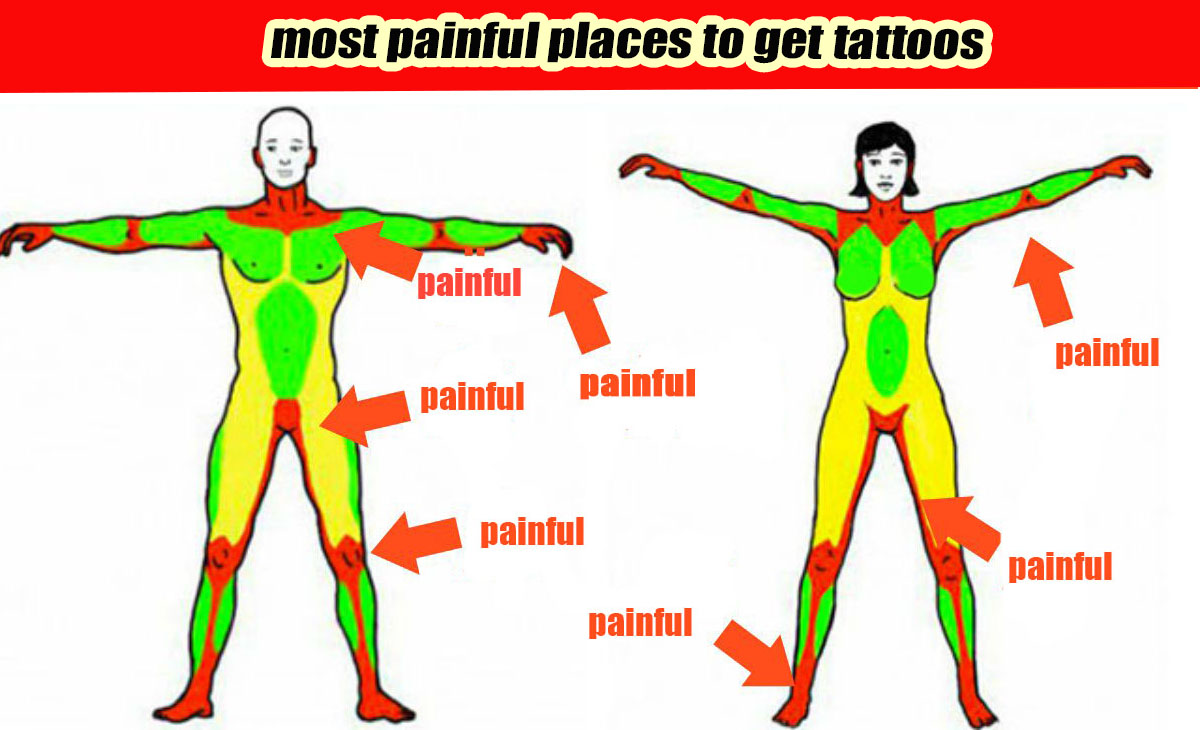Tattooing Nirvana: Finding Your Pain-Free Ink Spot
Is a truly painless tattoo even possible? The age-old association of needles and skin inherently suggests some level of discomfort. But what if there were ways to significantly minimize that discomfort, making the experience more accessible and enjoyable for everyone? This exploration dives deep into the concept of the "painless place to get a tattoo," examining the reality, the myths, and the techniques that can help make your inking journey as smooth as possible.
The idea of a completely painless tattoo is somewhat of a holy grail. Pain tolerance varies drastically from person to person, and factors like placement, size, and style all influence the level of discomfort experienced. However, advances in numbing creams, tattoo techniques, and aftercare practices are making the process significantly less painful than it once was. This opens up the world of body art to those who may have previously been deterred by the fear of pain.
Historically, tattoos were often rituals of passage, markers of status, or symbols of cultural significance. Pain was often an integral part of the process, adding to the ritualistic nature and demonstrating commitment. Today, while the cultural significance remains for many, the focus has shifted towards self-expression and artistry. Consequently, the desire for a more comfortable experience has grown.
The main issue surrounding the quest for a painless tattoo experience is managing expectations. While minimizing discomfort is achievable, eliminating it entirely is unlikely for most individuals. Understanding this is crucial for a positive tattooing experience. The key lies in identifying factors that influence pain levels and taking steps to mitigate them. This involves researching reputable artists known for their gentle touch, choosing appropriate placements, and utilizing effective numbing methods.
Let's define "painless" in this context as "minimally painful." A discomfort-free experience is likely unattainable, but significantly reducing pain is a realistic goal. For example, using a high-quality numbing cream before and during the tattooing process can dramatically lessen the sensation. Similarly, choosing a fleshy area like the thigh or outer arm can be less painful than areas with thin skin or close to bone, like the ribs or ankles.
One benefit of seeking less painful tattooing options is increased accessibility. People with lower pain thresholds can now consider getting inked without excessive anxiety. Another benefit is a more relaxed and enjoyable experience. A calmer client allows the artist to focus on their work, potentially leading to a better final result. Finally, minimizing pain can contribute to faster healing, as less trauma to the skin can expedite the recovery process.
Advantages and Disadvantages of Pain Management for Tattoos
| Advantages | Disadvantages |
|---|---|
| Reduced discomfort | Potential allergic reactions to numbing creams |
| Increased accessibility for those with low pain thresholds | Possible slight alteration of skin texture, making tattooing slightly more challenging |
| More relaxed and enjoyable tattooing experience | Added cost of numbing products |
Best Practices for a Less Painful Tattoo:
1. Choose a reputable artist: A skilled artist with a gentle touch can make a significant difference.
2. Consider placement carefully: Fleshier areas are generally less painful.
3. Use a numbing cream: Consult with your artist about appropriate numbing products.
4. Stay hydrated and eat before your appointment: This helps your body cope with the stress of the procedure.
5. Practice relaxation techniques: Deep breathing can help manage discomfort.
Frequently Asked Questions:
1. Where is the least painful place to get a tattoo? Generally, fleshier areas like thighs, outer arms, and buttocks are considered less painful.
2. Do numbing creams really work? Yes, they can significantly reduce pain, but their effectiveness varies.
3. Can I take pain medication before my tattoo? Consult your doctor, but generally, it's best to avoid blood-thinning medications.
4. How can I prepare for my tattoo appointment? Eat a good meal, stay hydrated, and get a good night's sleep.
5. What should I do if I experience excessive pain during my tattoo? Communicate with your artist immediately.
6. Are certain tattoo styles more painful than others? Intricate designs with fine lines or heavy shading can be more painful.
7. How long does the numbing effect last? This varies depending on the product and individual, but typically a few hours.
8. What are some aftercare tips for minimizing pain and promoting healing? Follow your artist's instructions carefully, keep the tattoo clean and moisturized, and avoid sun exposure.
In conclusion, the pursuit of a painless tattoo experience isn't about eliminating sensation entirely but rather minimizing discomfort and making the process more accessible and enjoyable. By understanding the factors that influence pain levels, choosing a skilled artist, utilizing effective numbing techniques, and practicing proper aftercare, you can achieve a significantly more comfortable tattooing experience. The journey to self-expression through body art should be empowering and positive, and by taking these steps, you can ensure that your next tattoo is a work of art you can cherish without unnecessary suffering. Embrace the art, minimize the ouch, and express yourself with confidence.
Connecting faith and culture exploring the youtube que dios te bendiga phenomenon
Exploring morning dew and glock 40 content on youtube
Unlock your inner tiktok star a guide to creating viral videos














